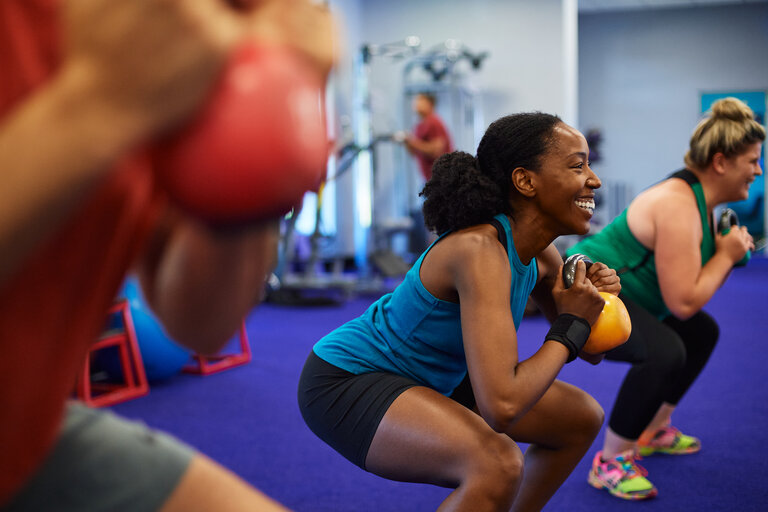As Coaches, we always get requests for customized workouts and we always reply with a resounding, “HELL YEAH!” One of the most sought-after muscle groups to “isolate” or “define” requested by our members is the GLUTES! The reason is probably because our members understand that weak or under-developed glutes can wreak havoc on the body…or maybe it’s to fill out those jeans! Whatever the reason you’re looking to engage and build your glutes, we’ve got your back(side) with a run-down of the muscles that make up and support the glutes, as well our top 10 exercises to engage that booty all-around! Your booty-boot camp starts… NOW! *blows whistle*
Anatomy of the glutes
The gluteus muscle group is like an onion with many layers; however, unlike the thin layers of an onion, the muscles of the glutes are large. In fact, the glutes are the largest muscle group in your body! There are three main muscles in the gluteal group, their names are gluteus maximus, gluteus medius, and gluteus minimus. They are named for their relative size– largest, medium, and smallest. The gluteus maximus is on the top, and beneath that is the gluteus medius, with the innermost of the three being the gluteus minimus. In addition to the three main gluteal muscles, there are also stabilizer muscles that support the glutes, as well as muscles that support side-to-side motions of your legs, called adductors and abductors.
Gluteus Maximus
Meet the largest single muscle in the human body, the gluteus maximus. This muscle is the outermost layer of the glute and gets the most attention, and for good reason– this muscle is responsible for providing strength and stability throughout the squatting range of motion, and also helps move the body forward and helps provide major power in movements like jumping and running.
Gluteus Medius and Gluteus Minimus
The gluteus medius and gluteus minimus are the lesser-known but equally-important components of the glutes-trio. They are located beneath the gluteus maximus, and they help stabilize your hips as well as help rotate your leg and allow for your body to turn and change direction.
Tensor Fascia Latae
This muscle, also known for short as TFL, is located on the front part of your leg and attaches at the top of your iliac crest (hip) bone and connects at the top of your femur (thigh) bone. The TFL is related to the gluteal muscle group because it aids in stabilizing the hip as well as helping the leg to move. Every time you take a step forward, this is the muscle in the front of your hip that is initiating that movement.
Activate All Muscles
To fully and comprehensively activate your glutes, there are different exercises you can combine in a workout to make sure nothing is left behind (see what we did there?). The gluteus maximus is targeted by some of the most common lower-body exercises such as squats and lunges, so that muscle is generally the least-ignored of the group. We will show you how to target all three gluteal muscles as well as that all-important TFL using specific exercise variations for each!
How to Target Gluteus Maximus
The best exercises for the gluteus maximus are squats, lunges, deadlifts, step-ups and sprints.
Squats
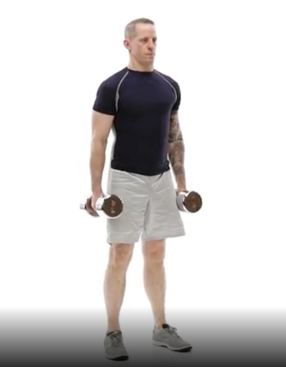
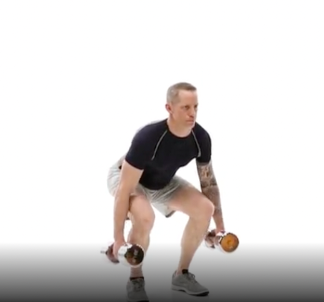
- Stand upright holding dumbbells by your sides with your feet flat, shoulder-width apart.
- Lower your body toward the floor, sending your hips back and down and bending your knees.
- Push through your heels to return to the start position.
- Keep your back flat and head up throughout the movement.
Lunges
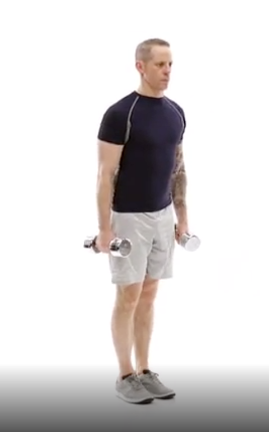
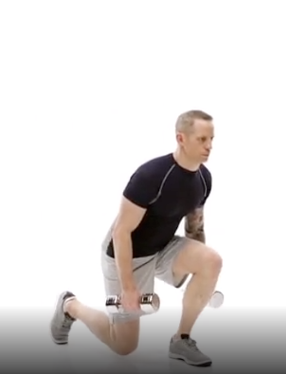
- Stand upright holding dumbbells by your sides with arms straight.
- Take a step forward, dropping your back knee down and leaning your torso slightly forward with your weight on your front leg.
- Push off your front foot to return to the start position.
Deadlifts
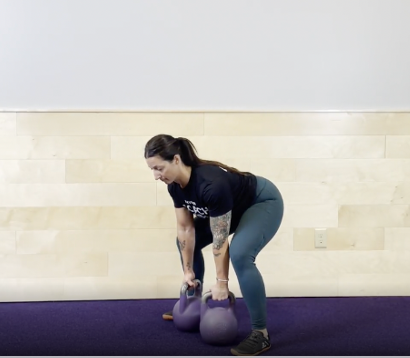
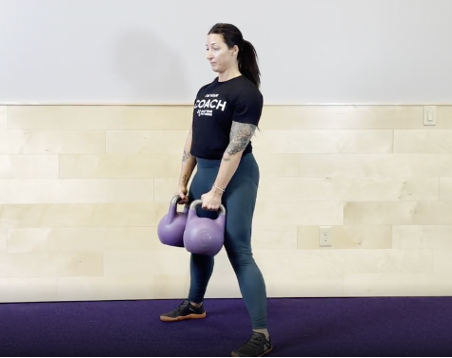
- Start in a squat position with your feet hip-width apart, your head up and your hips low holding weights on the floor on either side of your feet.
- Stand up lifting the weights, keeping your arms straight and your back flat.
- Lower the weights back to the floor, sending your hips back and down and bending your knees.
Step-Ups
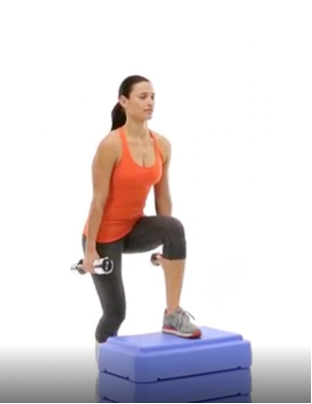
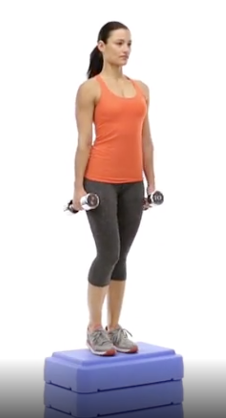
- Stand upright with one foot on a bench, holding the dumbbells by your sides with your arms straight.
- Step up onto the bench, pushing down on your front foot.
- Step down off the bench onto the back foot and repeat.
Sprints
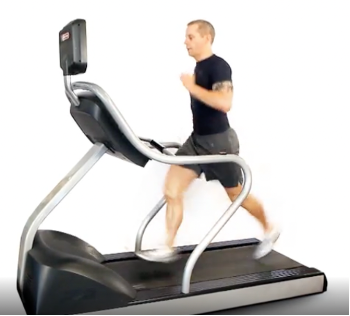
- Start the treadmill for a jog then gradually increase the speed up to your sprint speed.
- Run in an upright position in the middle of the treadmill track swinging your arms by your sides up to about chest height in front and back down to your hip.
- Concentrate on your stride length as well as your stride frequency.
- Sprints can also be done outdoors!
How to Target Gluteus Medius and Gluteus Minimus
Because the gluteus medius and gluteus minimus have similar functions, the exercises used to target these muscles are the same. The best exercises to work the rotational strength of your glutes and hips are clamshells, banded side steps, and quad hip abduction (also known as fire hydrants).
Clamshells
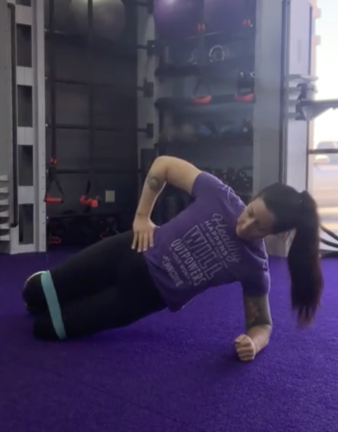
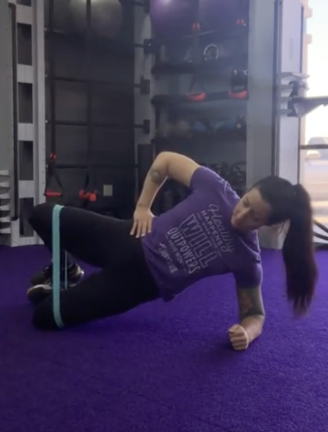
- Lie on your side with knees slightly bent and your elbow underneath your shoulder.
- Place a mini band above just the top of your knees.
- Press into your bottom forearm to lift the hips as high as possible, keeping your abs engaged.
- Raise your top knee to open the thighs like butterfly wings, then slowly lower the knee, completing one rep.
Banded Side-Steps
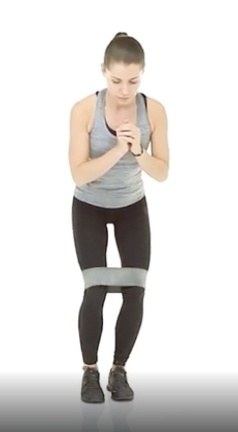
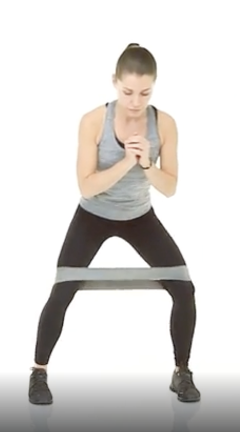
- Place the mini just about both knees.
- Sit hips back in a shallow squat.
- Shuffle out to the side keeping tension in the band.
- Shuffle back the other direction.
Quad Hip Abduction
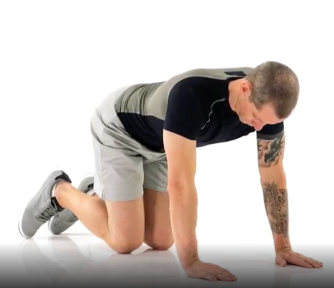
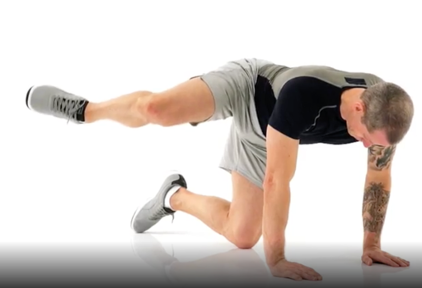
- Kneel on all fours with both knees and hands on the floor.
- Raise one leg up and out to the side, keeping your knee bent and moving from the hip.
- Hold briefly, then lower and repeat.
How to Target TFL
The best exercises for engaging the TFL are side lunges and stability ball hip abduction.
Side Lunges
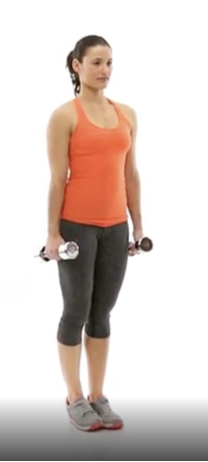
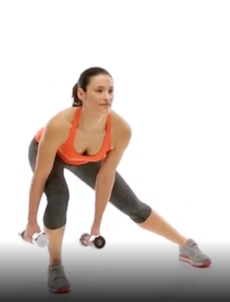
- Stand upright holding the dumbbells by your sides with your arms straight.
- Step laterally to one side, lowering your body down and leaning your torso slightly forward with your weight on the outside leg. Be sure to keep your trailing leg straight.
- Push off your outside foot to return to the start position.
Stability Ball Hip Abduction
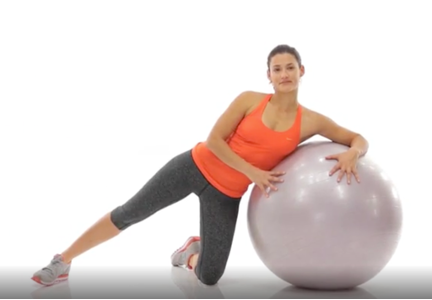
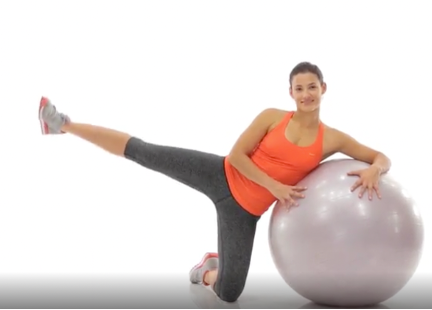
- Lay on the ball on your side with one knee on the floor and the top leg straight out to the side.
- Lift the top leg straight up, moving from the hip.
- Lower and repeat.
How to incorporate these exercises into your fitness routine to see results
Okay, so you’ve got a better understanding of your glutes’ anatomy and some moves to target the muscles. Butt to see results, you’re going to want to work these muscles 1-2 times per week and get ample recovery time in between those workouts (aim for 48 hours between leg workout days, if possible!) For a quick and effective option, check out this 20 Minute Glute Workout!
How will you know if your workouts are, well, working? It’s important to remember that growing muscles does take time, but it won’t take forever! With consistent workouts, ample nutrition and sleep, it is possible to add muscle mass in as little as four weeks. A great first step is to connect with a Coach at your local Anytime Fitness and schedule a free fitness consultation. There you can get a body scan that measures your body composition, i.e. your scale weight, broken down into percentages of muscle mass and body fat. Honestly, these scans make standing on a regular scale feel prehistoric! The advantage of getting a regular body scan can show you numerically how you’ve progressed and validate the ways you’ve been adding muscle as a result of your hard work!
Want to see some of these moves in action? Peep this video below featuring Coach Heather:
